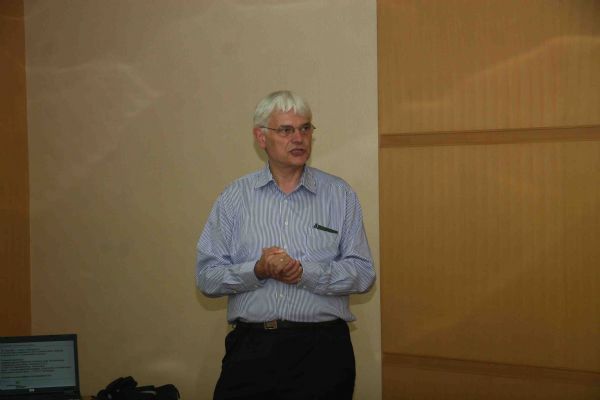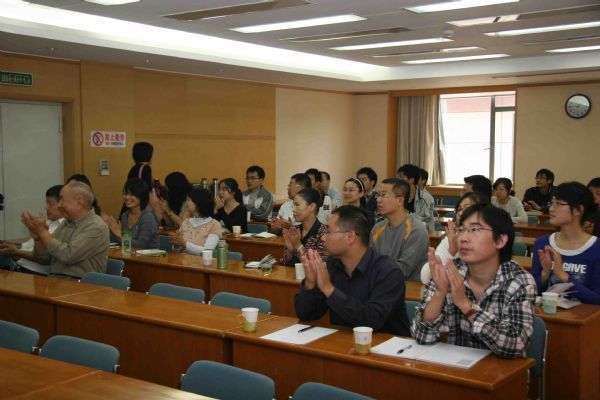
Prof. Walter Arnold, world well-known experts in Non-Destructive Testing visited IACAS.
Prof. W. Arnold got his PhD at the Physics Department of the Technical University of Munich in 1973. In 1980, he joined in Fraunhofer-Institute for Non-Destructive Testing, Saarbruecken, Germany, where his main fields of activity and interests included: Non-destructive methods by means of high-frequency ultrasound applied in particular to metals and ceramics; Acoustic Microscopy (AFAM); Generation of ultrasound using pulsed lasers; Photoacoustics and thermal waves microscopy; Interferometric methods for detection of ultrasound; Non-destructive testing of bonds, Atomic Force Microscopy, Eddy current techniques, X-ray inspection, Materials Science and Solid State Physics, Technology development in these fields; Development of an instrument for the European Space Mission “Rosetta” (CASSE instrument). Prof. W. Arnold has authored and co-authored about 370 publications, (250 in Non-Destructive Testing, others in Solid State and Applied Physics and Materials Science, approx. 170 journal papers), holds 11 patents and patent applications, has edited two books besides and organized several conferences both on a national and international level. Prof. W. Arnold is member of several review boards of research institutes: Member also for the Alexander von Humboldt Foundation awards committee for experienced researchers and Sonja Kovaleskaja prices; Fellow Institute of Physics London, Honorary Fellow Indian Society for Non-Destructive Testing. He called on IACAS for several times and kept a good cooperation relationship with the researchers in our institute.
Prof. Arnold' s lecture covers many aspects of non-destructive testing study. In his first lecture, he introduced the physic basics of non-destructive testing and some testing methods, like NDT&E, X Ray, vortex heat effect and so on. Also he stated some new techniques for receiving and evaluating the signals, such as synthetic aperture technique, phased array technique, electromagnetic acoustic technique and so on. Furthermore, Prof. Arnold made a special illustration about the theoretical foundation of rayleigh wave and testing examples by using this testing method.
In the second lecture, Prof. Arnold introduced the his latest research progress in Atomic force acoustic microscopy study. He mentioned the imaging mechanism of atomic force acoustic microscope, how to irritate vibration mode and numerical simulation results in this situation. He showed the audience that using this technique can get a high-resolution imaging of the testing samples and can realize the attenuation of materials, young modulus, structures of piezoelectric material by the characteristics of theirs vibration mode. Compared to the traditional electron microscope, the new microscopy has several advantages. It can make high-resolution three-dimensional imaging and it can work without the consideration of the coupling state of probe and objects. Yet, it still have the disadvantages due to the diameter of the probe, such as limited range of imaging, low speed of imaging and the repeated check of the status of the probe.
Moreover, as the number of evaluation committee of “The Alexander von Humboldt Foundation”, he made a brief introduction of this scholarship and encourages the researchers in our institute actively applied for the scholarship.




